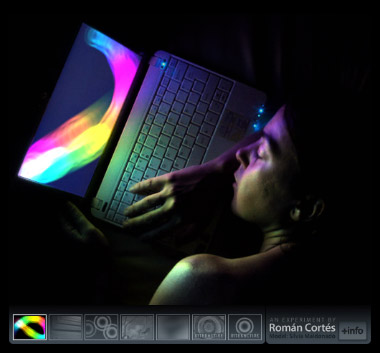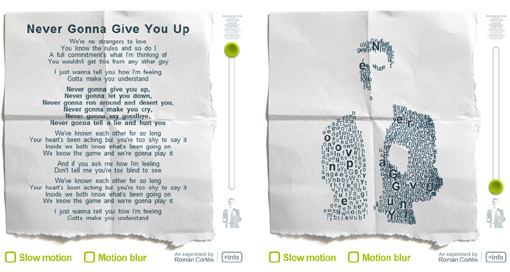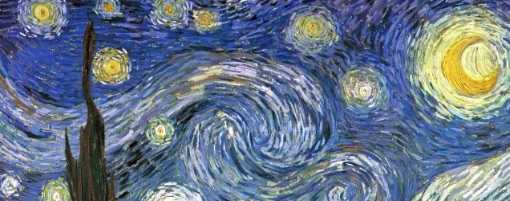Relighting Sylvia
28 de Junio del 2010Inspired by the research of Paul Debevec on photographic relighting, I’ve created this Flash experiment showing a real-time relighted scene of my girlfriend with her netbook. Watch it here. Please note it requires a fast computer to run at full framerate.
The scene has been captured without any special hardware, just a common reflex camera (Nikon D70) with its remote, a tripod and the netbook as the only light source. The time for shooting all the photos required for the relighting process was about 3-4 minutes, where Silvia — the Spanish for Sylvia — stayed amazingly static for the purpose.
I’ve really enjoyed the development of this experiment because it mixes the most of my hobbies: photography, art, coding, technology, and also it has been a great opportunity to involve my girlfriend in any of my experiments.




